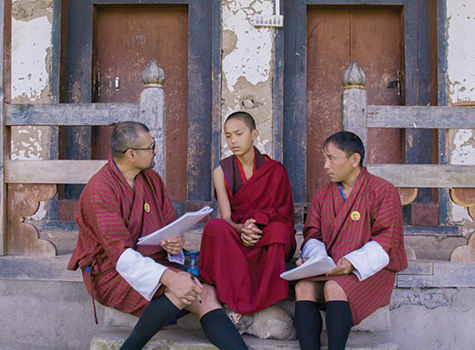
Bharatha Natyam, when presented in its purity, is one of the most subtle, sophisticated, and graceful dance forms in the world. This South Indian dance style is immensely popular in India and in many parts of the world including USA. I am so impressed with my students who have been attending all online classes and continuing their learning through online resources in spite of COVID pandemic. Many parents want their children to learn this dance form either to fulfill their own childhood dreams or because they hope their children will learn about the epics and the rich Indian culture through dance. I thought if I write about this dance form, I can also share it with my students who can read this article and learn the history of this amazing dance form.
Source:
Let us start with the source of this name. The word “Bharatha” is believed to be composed of the first syllable of its three main elements:
BHA for Bhava – meaning mood/expressions
RA for Raga – meaning melody/tune/song
THA for Thala – meaning rhythmic timing/beat
NATYAM – meaning the combination of both dancing and acting.
It is also known that Sage Bharatha has written the great book Natya Sastra, describing all aspects of dance. This book includes the basic techniques called Adavus; position of the feet and body; single and double hand gestures called Asamyuktha and Samyuktha hasthas; Shiro Bhedas-or head movements; Drishti Bhedas or eye movements; Bhru Bhedas or eyebow movements; Griva Bhedas or neck movements; Nava rasaa or nine emotions and so on. I wrote dedicated articles on these subjects.
Temples:
Great temple builders, the Cholas, who ruled India between the 9th and 13th centuries, left a wealth of material on dance carved as inscriptions and sculpture on temples. Dance poses abound in the grand temples like the Brihadeshwara temple at Tanjavur, the cluster of temples at Kanchipuram and Kumbhakonam, Meenakshi temple at Madurai are some of the examples. The grand master of all temple architectures for this dance style is my favorite Nataraja temple at Chidambaram, in Tamil Nadu. All 108 dance Karanas or poses are engraved in the temple’s grand entrance doors. These carvings have been preserving the history of dances for ages.
Guru Shishya Parampara:
Even in the age of technology, a complicated dance form like this cannot be learned without the careful guidance of a guru. In spite of challenges facing all gurus during the pandemic, the interaction between guru and student is essential. All established dancers themselves will sayit starts with the great Gurus being treasure troves of knowledge. They had the heritage of a practical methodology and wisdom. They had the ability to be intuitive in their teachings. They were deeply connected with the inner beings of their disciples. They taught more than dancing. They helped us to recognize our inner and outer selves. They taught their students as much by what they said as by what they did not say. They allowed us to nurture and develop our own epistemologies. It is this harmonious blend of relationship between guru and the disciple that renders the transcendent experience in dancing.
Major styles within Bharatha Natyam:
Due to the historic time periods and its backgrounds, many major styles were developed within this dance form. Some of them are:
Melattur Style- This style is based on expressive acting and spontaneous movements.
Pandanallur Style – This style stresses on deep sitting positions and quite difficult to perform.
Vazhuvoor Style – This style the movements flow smoothly with rare leaps.
Kalakshetra Style – This style has hints of Devadasi style and is the most popular of all styles.
Margam:
A general format was established using a sequence of progressively hard dances to complete an Arangetram or Ranga Pravesham, or as we call it here a “Dance Graduation”.
This repertoire starts with Kauthvam or Alarippu and continues with Jathiswaram, Shabdam, Padam, Keerthanam, Varnam and ends with Thillana.
Music:
The harmonious blend of Karnatak vocal music (south Indian music style) and Bharatha Natyam has occurred as early as 1572 AD. Instruments such as flute, violin, Mridangam (south Indian Drum), Ghatam (clay pot) etc. are used as accompaniments.
Costumes:
Many styles of dance costumes are being introduced through times, such as Padam style or Sari style; pant styles with 2 or three fans; round fans; V-shape fans; side fans etc. The beauty of the costumes is the fan that emphasizes the main aspect of this dance form “squatting”.
Exponents:
There are so many exponents of this dance form, I am afraid I will not have space to mention them all. However, if you are doing a research paper for your high school project or a thesis, you must include these renowned dancers. Balasaraswati, Rukmini Devi, Kalanidhi Narayanan, Ram Gopal, Pillai family, Kamala Lakshman, Vyjayathimala, Padma Subrahmanyam, Dhananjayan, C.V. Chandrasekhar and many more. These gurus have propagated this dance form to thousands of disciples across the world.
I hope this comprehensive view of Bharatha Natyam dance style will help you cherish, appreciate and treasure this three thousand year old tradition. Many years of practice, grace, speed, versatility and complete mastery of the art are necessary to do full justice to a dance form such as this.
———-
For questions or comments contact Maha via e-mail at: [email protected]
Posted: Monday, June 29, 2020



